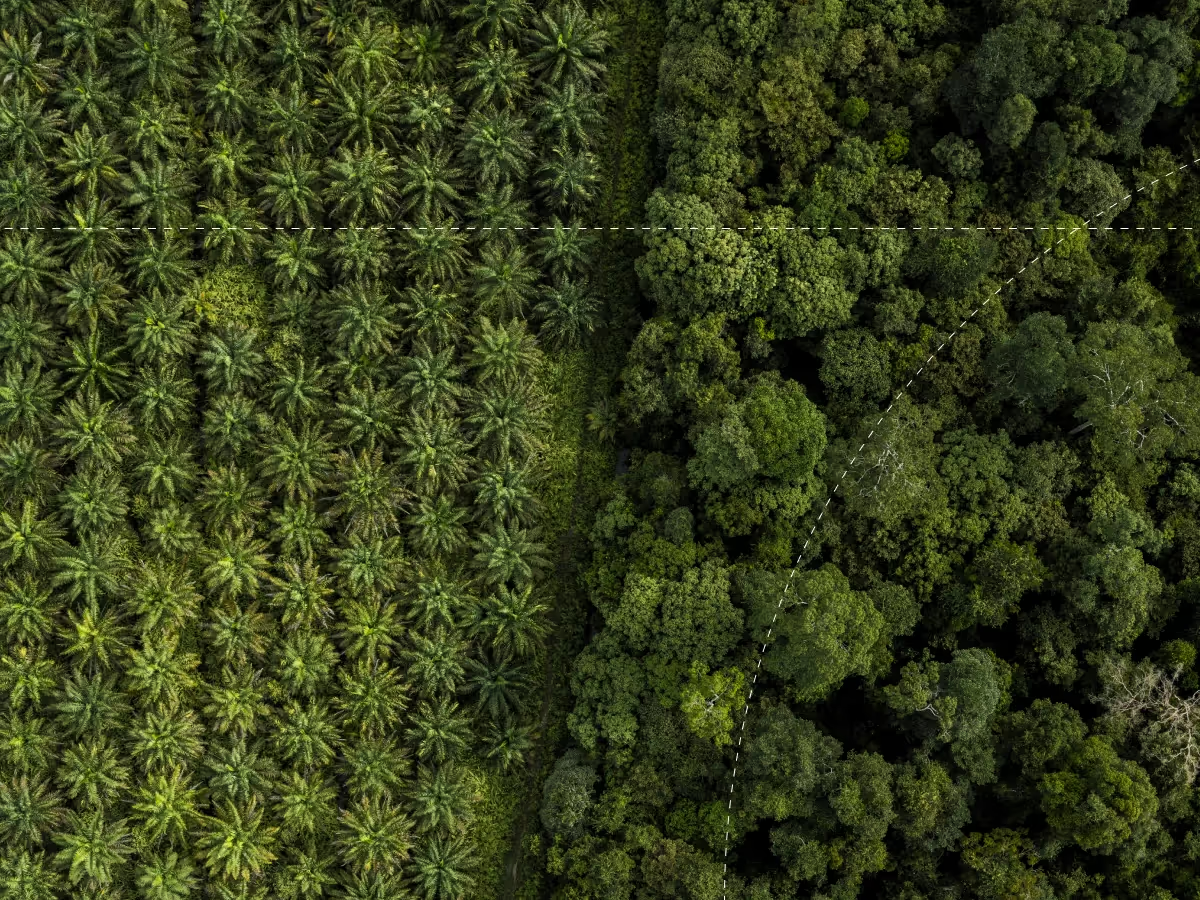EUDR Background
In the last 10 years alone, we have lost our primary forests at an alarming rate of 4 million hectares per year.1 That is equivalent to an area larger than Bavaria vanishing every two years. The European Deforestation Regulation addresses this issue of deforestation and forest degradation driven by the expansion of agricultural land for producing commodities and their derivatives like leather, chocolate, tires, or furniture. Recognizing its role as a major consumer of these commodities, the EU aims to lead efforts in mitigating deforestation and forest degradation.
Operators or traders dealing with these commodities in the EU market must verify that their products are not linked to recent deforestation or forest degradation or violate environmental and social laws in the producing countries. Only products that meet these requirements are eligible to be placed on the European market or be exported from it.

Products affected by the EUDR
The law concerns deforestation and forest degradation associated with the conversion of land for agricultural use for soy, beef, palm oil, wood, cocoa, coffee, rubber, and their derived products such as leather, chocolate and furniture, charcoal, printed paper, and palm oil derivatives.
EUDR Timeline
- Adoption:
June 29th, 2023: The regulation comes into force. It is now officially a requirement to comply with the regulation, with different dates depending on business size.
- Implementation period:
Companies are given 18 months to prepare for and implement the new rules. Micro and small enterprises are allowed a longer adaptation period
- Entering into force:
December 30th, 2024: Compliance necessary for large businesses. They will be subject to checks, fines, and potential bans from the EU market should they fail to meet requirements by this date.
The EUDR will apply to all products harvested from June 29th, 2023, and imported to or exported from the EU market after December 30th, 2024.
Any wood harvested after June 29th, 2023, but imported to the EU before December 30, 2024, must adhere to the superseded EU Timber Regulation (EUTR).
EUDR vs EUTR
The new regulation supersedes the EU Timber Regulation that came into force back in 2013. Since the EUDR has a broader scope as well as stricter due diligence requirements, the following table summarizes some of the key differences.
The three criteria to be EUDR-compliant
To comply with the new regulation the traded commodities must fulfill three main criteria. In the following, we will examine these three criteria in more detail providing clarity on how to act.
Criterion #1: Products must be deforestation-free
The term "deforestation-free" means that relevant products and their raw materials are sourced from areas not affected by deforestation or forest degradation after December 31, 2020.
To properly address this requirement, the regulation provides definitions:
Criterion #2: Products must be produced in accordance with the relevant legislation of the country of production
The EUDR goes as far as incorporating the laws applicable in the country of production in the realms of
- Land use rights.
- Environmental protection.
- Forest-related rules, including forest management and biodiversity conservation, were directly related to wood harvesting.
- Third parties’ rights.
- Labor rights.
- Human rights protected under international law.
- The principle of free, prior, and informed consent (FPIC), including as set out in the UN Declaration on the Rights of Indigenous Peoples.
- Tax, anti-corruption, trade and customs regulations.
Criterion #3: Products must be covererd by a due diligence statement
The Due diligence statement is divided into three sections. Operators must document the collected information, the risk assessments as well as the risk mitigation, review them annually and make them available to authorities upon request.
Section 1: Collecting information
The EUDR requires companies to collect information about their products and provide insights on:
- The type of products and that they are 1) deforestation free and 2) have been produced in accordance with the laws in the production country. This information must be kept for at least five years.
- Details such as the trade name, the quantity in kg, as well as the country of production and contact information of the products’ supplier and recipient.
- If the product is or contains wood, the common name of the species as well as the full scientific name.
- The geolocation of all plots of land where the product or parts of it have been produced or held – in the case of cattle.
Section 2: Conducting a risk assessment
The regulation entails plans to develop a three-tier system to assess the countries' risk levels. So far, each country has been assigned a "standard" risk. High-risk and low-risk profiles will be added as further classifications. This taxonomy has not yet been published but the law states that the EU will communicate it until at the latest December 30th, 2024.
Besides the country risk level, the assessment must include the following:
- Presence of forests and indigenous peoples in the production country.
- Cooperation with indigenous peoples and their claims over land use or ownership.
- Prevalence of deforestation or forest degradation.
- Reliability and validity of information sources.
- Country-specific issues like corruption, human rights violations, and conflicts.
- The complexity of the supply chain and tracing product origins.
- Risks of regulation circumvention or mixing goods with products of unknown origin.
- History of non-compliance in the supply chain.
- Note: Wood products with a valid FLEGT license are compliant
Section 3: Implementing risk-mitigation mesures
If a risk assessment shows any non-compliance risk, operators must adopt effective risk mitigation procedures before marketing or exporting products. These include:
- Requesting additional information or documents.
- Conducting independent surveys or audits.
- Implementing measures related to information requirements.
- Supporting suppliers, especially smallholders, to comply through capacity building and investments.
Operators must have policies and controls to effectively manage non-compliance risks. This includes:
- Implementing risk management practices, reporting, record-keeping, and compliance management.
- Appointing a compliance officer at the management level (for non-SME operators).
- Establishing an independent audit function to review internal policies and controls (for non-SME operators).
How The Landbanking Group addresses the EUDR
In our flagship platform Landler.io, we just launched a deforestation indicator that helps companies understand whether land has been affected or not by deforestation.
We use best practice data from the GLAD Global Forest Cover Change dataset, developed and maintained by the Global Land Analysis and Discovery Group. This collaboration enables us to indicate whether or not the measured land polygons have been deforestation-free since 2021.
Our Indicator defines a forest as an area of trees greater than 5 m in height and can detect deforestation in an area of 30x30m or greater.
Even if the geodata originates from the present, statements can be made about the past to cover the legal deforestation date of 31.12.2020. For that, only the GPS coordinates of the polygon are required. These can be determined and provided even by smallholder farmers using a smartphone. The results of the data can be integrated into the due diligence report that must be made available when importing the products concerned.
You can try the deforestation indicator by signing up for a free beta account on our platform Landler.io.






